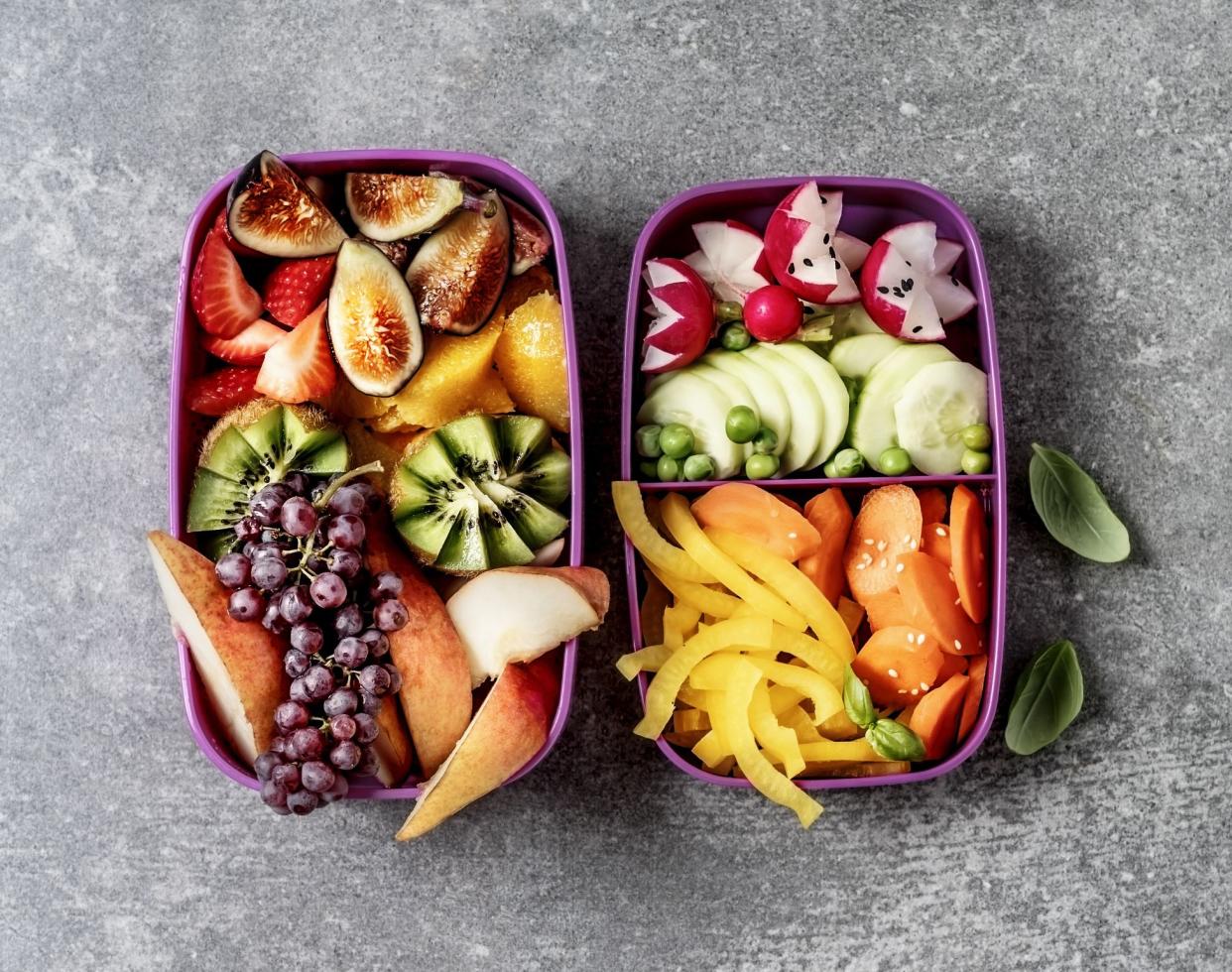Pegan Is the Latest Trendy Diet. But Is It Actually Healthy?

Because there aren't enough diet fads, there's a new eating plan that promises to help you look and feel your best. Created by Dr. Mark Hyman in 2014, the pegan diet is a combination of paleo and vegan, and has recently become trendy. On his blog, Hyman claims it's the best way to feel good, lose weight, and stay healthy.
But how do you meld these two contradictory methods? And is it actually the healthiest way to eat– as Hyman claims? Here's what you should know:

What is the Pegan Diet?
The eating plan incorporates principles from paleo and vegan. If you're unfamiliar, paleo emphasises eating meats, fruits, and vegetables, and restricts grains, legumes, dairy, potatoes, refined vegetable oils, and alcohol.
Vegans restrict food from animals, which includes unsuspecting items like gelatin, omega-3 fortified foods, and honey.
On the surface, the two seem pretty different, but they do share one thing in common: fresh fruits and vegetables.
"It’s just taking the things that are good from the paleo diet and taking the things that are good from the vegan diet and putting them together," Wesley McWhorter, R.D. and chef at UTHealth School of Public Health, tells Men's Health.
What Can You Eat on the Pegan Diet?
The bulk of your meals will consist of fruits and vegetables since Hyman recommends making plants 75 percent of your plate. Meat should be treated as a side dish instead of the main course. Here's a full list on what you can eat:
Healthy fats (think omega-3 fatty acids, nuts, coconut, and avocados).
Fruit and vegetables
Nuts and seeds
Gluten-free whole grains
Lentils for those who can't give up legumes
Grass fed, sustainably raised animals (fish, beef, pork and chicken are OK in moderation)
Sugar is an occasional treat
Foods to Avoid on the Pegan Diet
Hyman advises keeping these foods to a minimum:
Dairy, including milk, yogurt, and cheese. Organic goat and sheep's milk products are OK in moderation
Grains, including whole wheat. Gluten-free whole grains should be avoided because they "raise blood sugar and can trigger autoimmunity," according to Hyman
Legumes, but lentils get a reprieve
Sugar: very minimally
Vegetable oils such as canola, sunflower, corn, and soybean oil
Chemicals, additives, preservatives, dyes, MSG, and artificial sweeteners
Is the Pegan Diet Healthy?
Hyman believes this is the best plan for most people, although he says it will vary depending on health conditions and preferences.
"This way of eating makes the most sense for our health and the health of our planet. It is sustainable and kinder to animals," he writes on his blog.
But what do outside experts think?
"When you exclude entire food groups that bothers me," says McWhorter. "You can’t pinpoint one thing and say that’s the sole of all evils. That’s kind of what he’s saying there."
But McWhorter agrees with Hyman on one point: most of us need to eat more fruits and vegetables.
Instead of eliminating entire food groups, McWhorter suggests making vegetables at least half of your plate. Fill the rest in with meat and grains, or other foods of your choosing.
"Even if you don’t wan to cut down the size of your burger or steak, include the veggies," he says.
('You Might Also Like',)


